Submarines are already remarkable as vessels that travel under the surface of the water, but certain machines stand out as especially bizarre and amazing, often holding world records. In this account, we discover submarines so large they could launch aircraft, and even a submarine that could itself fly. We dive to new depths to discover the must-know and most remarkable in this underwater realm of human achievement and experimentation.
10. I-400 Class Submarine, Imperial Japanese Navy
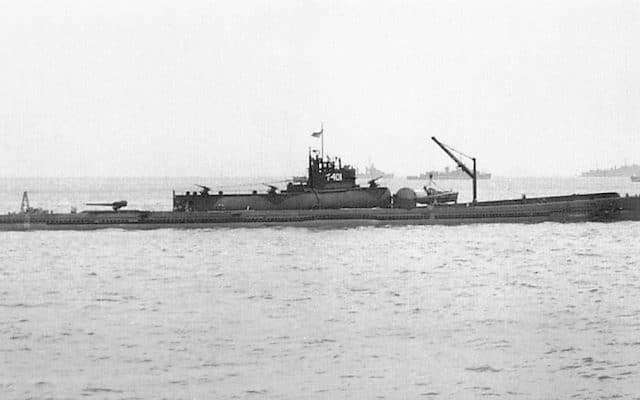
Submarines are famous for their use in combat and might be correctly imagined as purveyors of torpedo attacks. Yet the concept of a submarine seems as far removed from the work of an aircraft carrier as might be possible. Yet, engineering and necessity bring great surprises in the form of incredible feats of innovation. During World War II, submarines were widely used in combat and might have seemed to be the opposite of aerial means of fighting, given their undersea modus operandi. But the I-400 Class submarines of the Imperial Japanese Navy were huge submarines that were also aircraft carriers, launching fighters kept in storage tubes upon surfacing as required.
Measuring an incredible 400 feet in length, the giant submarines were reasonably close to being twice the size of a German U-boat. A fleet of 17 of the gargantuan subs was planned by Admiral Yamamoto but was not completed. The ability of the submarine to be an aircraft carrier in order to carry out clandestine raids on US territory was facilitated by the construction of a giant watertight hangar running below the submarine’s conning tower. This tube was gasket sealed and could hold three Aichi M6A Seiran floatplane fighter aircraft inside. Catapult launched, the fighter planes would then return, land, and be hoisted back into the sub for storage using a crane.
9. Kaiten “Kamikaze” Submarines
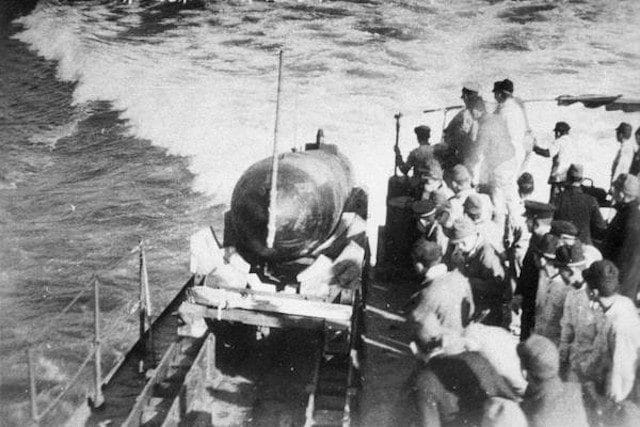
Kamikaze might be inextricably linked with airborne, one-way attack missions on WWII-era American shipping in popular imagination. In reality, the concept was unfortunately more widely applied. Kamikaze style attacks were not only carried out with explosive laden aircraft, but also a special type of submarine known as a “Kaiten,” which was packed with explosive weaponry and deployed in suicide sub attack missions to crash into ships. Initial models would allow the operator to escape from the deadly craft, but soon the models transitioned into an entirely suicide attack-fitted model.
These Kaitens did not offer any way for the operator to get out once locked inside. The intention for these craft was to be rammed into a target with great destructive power once launched from a larger carrier submarine that approached the target. The Kaiten subs were best described as being “manned torpedoes” in their form and function. Achieving speeds of up to 34 miles-per-hour, they were exceptionally fast, with the ability to close on a target more readily than a typical submarine. Death did not just come as a result of suicide attacks. Many would-be Kaiten pilots died in training exercises designed to increase their skills in delivering attacks on a target.
8. Soviet Submarine K-222
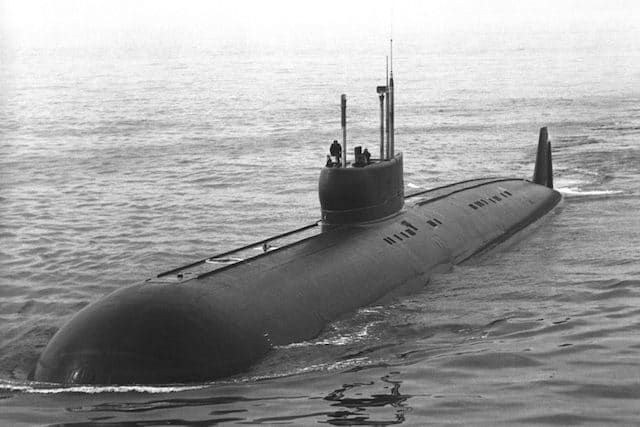
Due to the great drag associated with travel below the surface of the water and the design limitations inherent in most submarines, it’s typical for submarines to be slower than many boats, and always far slower than most land and air transport options. The fastest submarine in the world, the Soviet Submarine K-222 (initially named K-162), was constructed through a bold project that began in 1959 to build an exceptionally advanced, high-speed submarine. Launched in December 1968 the K-222 boasted a titanium hull, with operational speeds of up to 44.7 knots, or 51.4 miles-per-hour.
Achieving such a high speed was a noteworthy accomplishment, representing an incredible feat for a submarine. To be faster than most boats, considering the high drag and limited propulsion that faced most submarine designs, was a remarkable act of engineering ingenuity. The machine stood out as unique among submarine projects with its advanced titanium hull construction. However, the submarine experienced many structural challenges centering on hull degradation due to vibration and speed. Despite being decades old, the speed of K-222 has not been surpassed by any subsequent submarines built.
7. Red RFS-1 – Flying submarine

You might have seen it all, or then again you might not have. However experienced you are with the bizarre and seemingly untenable, you may well be convinced that you have seen it all once you take a look at the Red RFS-1. This machine is like no other, combining absolute opposites in travel mode to a remarkable new level. Forget flying cars! This machine is nothing less than a submarine that also doubles as an aircraft. In its two different modes, the RFS-1 either travels below the surface of the water, or surfaces and then takes flight in the mode of a small floatplane.
Constructed by American Defense Contractor Donald Reid in 1962, the layout of the machine was admittedly slightly terrifying, with a pylon mounted propeller just behind the open cockpit. The pilot was meant to breathe using an aqualung when the machine was in submersible mode. In the air, the submarine body was built to double as a fuselage, with the wings providing enough lift for flight instead of gliding through the water. It is perhaps more remarkable that the machine managed to fly for 75 feet than it is disappointing with regard to how the machine performed. The maximum depth of operation was 12 feet, aided by a rubber cover over the engine compartment.
6. Bathyscaphe Trieste
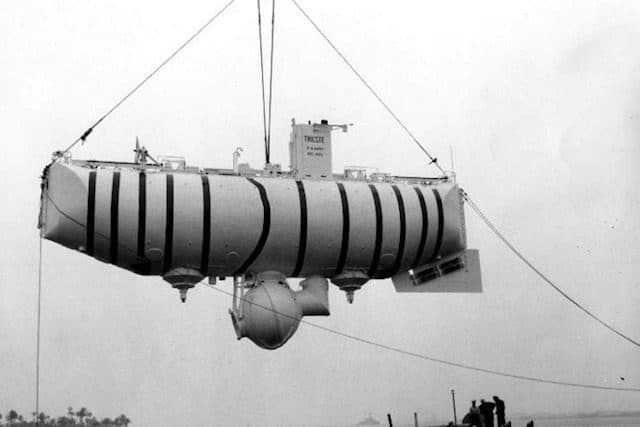
Ferrari creations may be fast, but an Italian-built submarine holds the world record for deepest dive. Just under 60 feet long, the somewhat tub-like Bathyscaphe (meaning deep ship) Trieste (named after Trieste in Italy) is a record-holding submarine extraordinaire that was built in Italy after being meticulously designed in Switzerland. In 1958 the machine was purchased by the US Navy and soon used in Project Nekton, which included exploring the deepest place on Earth, the Challenger Deep. The feature is exceptional in that it’s yet a deeper feature within the already extraordinarily low point in the Mariana Trench. The machine descended to the bottom of the Challenger Deep, being the first manned machine in history to do so.
The depth to which the super-sub dove was an incredible 35, 813 feet below sea level. Thus, while airliners have cruised over 30,000 feet above sea level, this immensely strong machine was a comparable distance below, navigating the super-deep trench environment, composed of vast crevices and enormous rifts in the sea floor. To reach the seemingly impossible depths that defined the mission, the Bathyscape Trieste employed iron ball weights that could be released once the time on the ocean floor had concluded. Interestingly, Jacques Piccard, the son of the vessel’s designer Auguste Piccard, was among the two man crew, which also included US Navy Lieutenant Don Walsh.
5. Project 941
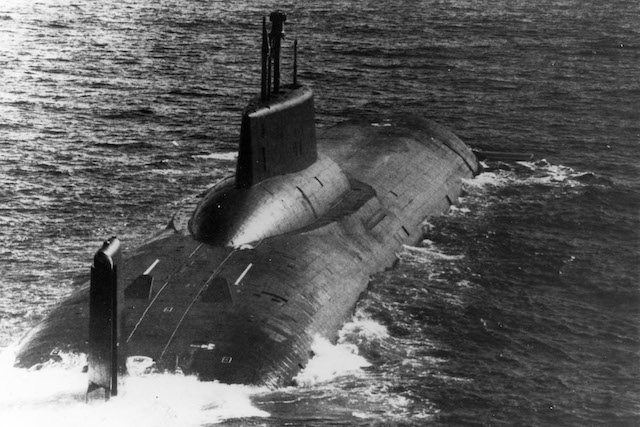
Submarines may often be imagined as relatively small potatoes in the world of ocean-going vessels. Frequently, submarines have an appearance closer to a large manned torpedo (we’re looking at you, Kaiten). But in fact they can reach enormous sizes, dwarfing certain boats. The submarine equivalent of a blue whale, Earth’s largest animal, makes many other submarines look like dolphins as far as size comparison goes. Constructed in 1981 in the Soviet Union and unsurpassed to this day, the largest submarines in the world are undersea ships in their own right.
Measuring 574 feet in length, just over 75 feet in width (beam) and 39 feet in depth (draught), the huge “Akula” (Shark) submarines resulting from the Soviet Project 941 were the largest submarines ever built. They were really brought to public attention in the west in the Tom Clancy novel The Hunt for Red October, about an Akula (or “Typhoon,” as NATO calls it) class sub and her crew attempting to defect to the United States. The machines were terrifying, with a reinforcement to the hull and propeller shields to facilitate breakage through arctic ice. The weaponry included 200 nuclear warheads that could be launched from remote locations in an offensive. The 53-foot long R-39 missiles onboard each contained 10 separate nuclear warheads that could strike separate targets, while the missiles had a range of 4,480 nautical miles.
4. X-Class Midget Submarines

During the Second World War, the British Royal Navy utilized bizarre micro subs that were known as X-Class Midget Submarines. Developed in 1943 and 1944, the minute but potentially deadly vessels would be towed behind a full-sized submarine and to their Axis target. The miniature subs may have been exceptionally tiny, but they still were able to carry a crew of four. Once towed within attack range, the tiny sub would be entered by its crew, who approached by dingy. After boarding, the crew would secretively advance upon the chosen target.
The subs carried two explosive weapons, one on each side of the hull. The sinking explosive charges would be deposited beneath the target vessel, allowing time for the miniature sub to evacuate the area and leaving no culprit in sight at the time of the devastating blast that would ensue. While the machines were small at just 51 feet in length, the material used to construct the submarines was sturdy, and substantial remains persist, embedded in the sand at Aberlady Beach in Scotland. Stealthy in their design, vessels were equipped with electromagnets that helped the miniature subs to avoid being picked up by seabed-placed anti-submarine detectors.
3. Atlantis Passenger Submarines
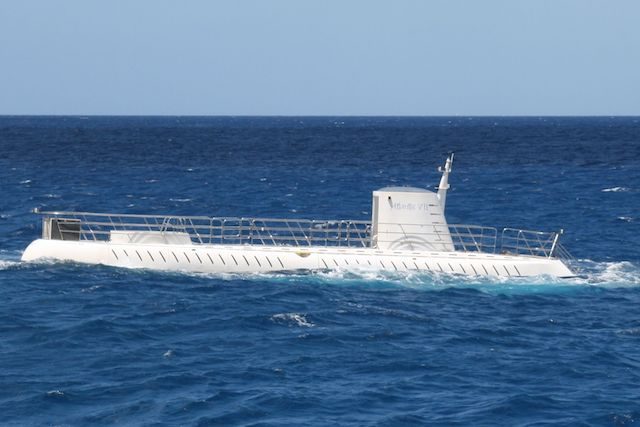
Be it scientific exploration, weapons research, or wartime deployment, submarines conjure up thoughts of all of these applications. But recreational trips in the name of tourism? Not so much. However, submarine trips do exist, and Atlantis Submarines International, Inc. is an innovative tourism company that provides submarine tours deep into the ocean in space age — or shall we say, sea age — ships with all the bells and whistles, or rather, periscopes and fins to make for a trip never to be forgotten. Planned in 1985, the project stands out as highly innovative, giving everyday explorers an underwater oceanic experience most would only dream about.
The operations of Atlantis are surprisingly significant in scale. With bases in places as spread out as Guam, the Caribbean, and the Hawaiian Islands, the company has an incredible variety of underwater adventures to offer guests. Having such options in place, a surprising number of guests have opted for the undersea experience. In total, over 11 million passengers have ridden below the waves on submarines operated by the company. The business employs around 450 staff, with extensive work to accommodate regulatory requirements succeeding to the point of being able to involve school children in trips as outdoor class experiences.
2. The Turtle
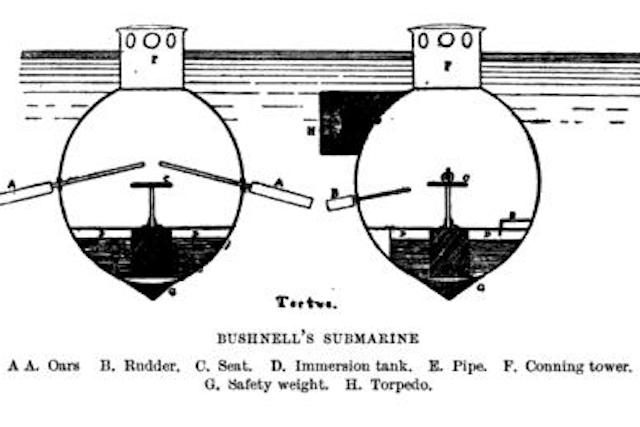
Submarines, particularly those of military use, might seem to be the epitome of more modern advancements. Yet some things that we consider modern are far older than commonly known. The 1775 American Revolutionary War against Britain saw a strange armed forces project funded by George Washington himself. The somewhat amusing looking Turtle was the world’s first submersible to be deployed in combat. Globe-like, only 8 feet in length, and resembling its reptilian namesake, the Turtle represented a distinct contrast from the torpedo-shaped form of most modern subs.
The submersible was entirely human powered, with ballast that consisted of lead. On September 7, 1776, the Turtle was deployed in the first ever attack by a submarine with Ezra Lee at the controls. The rounded, slow Turtle did not fire torpedo rounds, launch missiles, or aggressively chase the enemy ship. The inaugural submarine attack saw Lee sneak up to the HMS Eagle, a 64 gun British ship, and attempt to plant a time bomb on the hull. The mission failed due to a boring tool being blocked by iron sheathing. But apart from the mechanical challenge, the submarine was not detected by the ship’s crew during the clandestine bomb planting attempt. The bomb ended up exploding, but neither the ship nor the Turtle were destroyed.
1. USS South Dakota SSN-790
The F-117 Nighthawk may be famous as the US Air Force stealth aircraft par excellence, but under the seas, stealth machines also exist in the form of a remarkable stealth submarine. One might, at first thought, imagine Navy submarines to be stealthy machines to begin with, but in fact there are many effective means of detecting them. As a result, further advancement to make a submarine more secretive and easier to conceal from detection has been made over the years.
With such priorities in mind, the USS South Dakota SSN-790 is nothing less than the most advanced stealth submarine roaming under the seas today. The project to create this unique submarine started in 2016; the vessel was christened in 2017 and the delivery took place in September 2018. The machine is nuclear-powered and does not require refueling at any time during its lifespan. That means the submarine can travel indefinitely on its S9G Reactor and reach speeds of up to 25 knots as it advances under the waves. With ample technology to minimize detection, the attack submarine can surreptitiously fire devastating armaments, including Tomahawk Cruise Missiles, while taking advantage of effective concealment.
